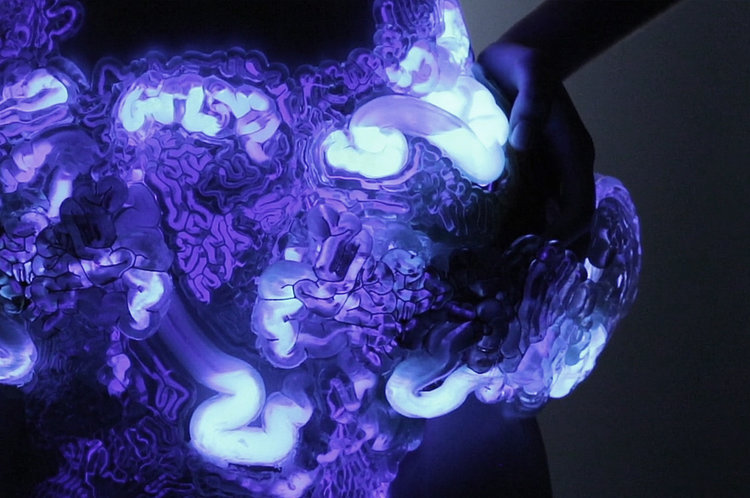
Living Mushtari is a 3D printed wearable accessory that serves as a microbial factory. The shape of the object is designed using generative algorithms based off of biological growth and recursion. It is intended for the wearer to “be able to trigger the microbes to produce a particular substance – for example a scent, a color pigment, or fuel.” I recognized the pieces from the 3D printed fabric Nervous System video we watched in class. The pieces are clearly not intended for everyday use since they are stiff and uncomfortable, which was the point made in the fabric video. Now I understand that they are this way because they need to hold liquids filled with living organisms. I wonder if the same technology could be applied to something smaller and jewelry-like. I don’t really understand why they chose to make a strange looking crotch cover.
Miguel Nobrega made a series of generative isometric drawings that I like, called possible, plausible, potential. They are printed using a plotter. I like how the drawings look like buildings, and by looking close you can see how the plotter marked each line individually. Even though the drawings are modeled in 3D and printed in 2D, the plotter gives it them an illustrated effect that I really enjoy.
